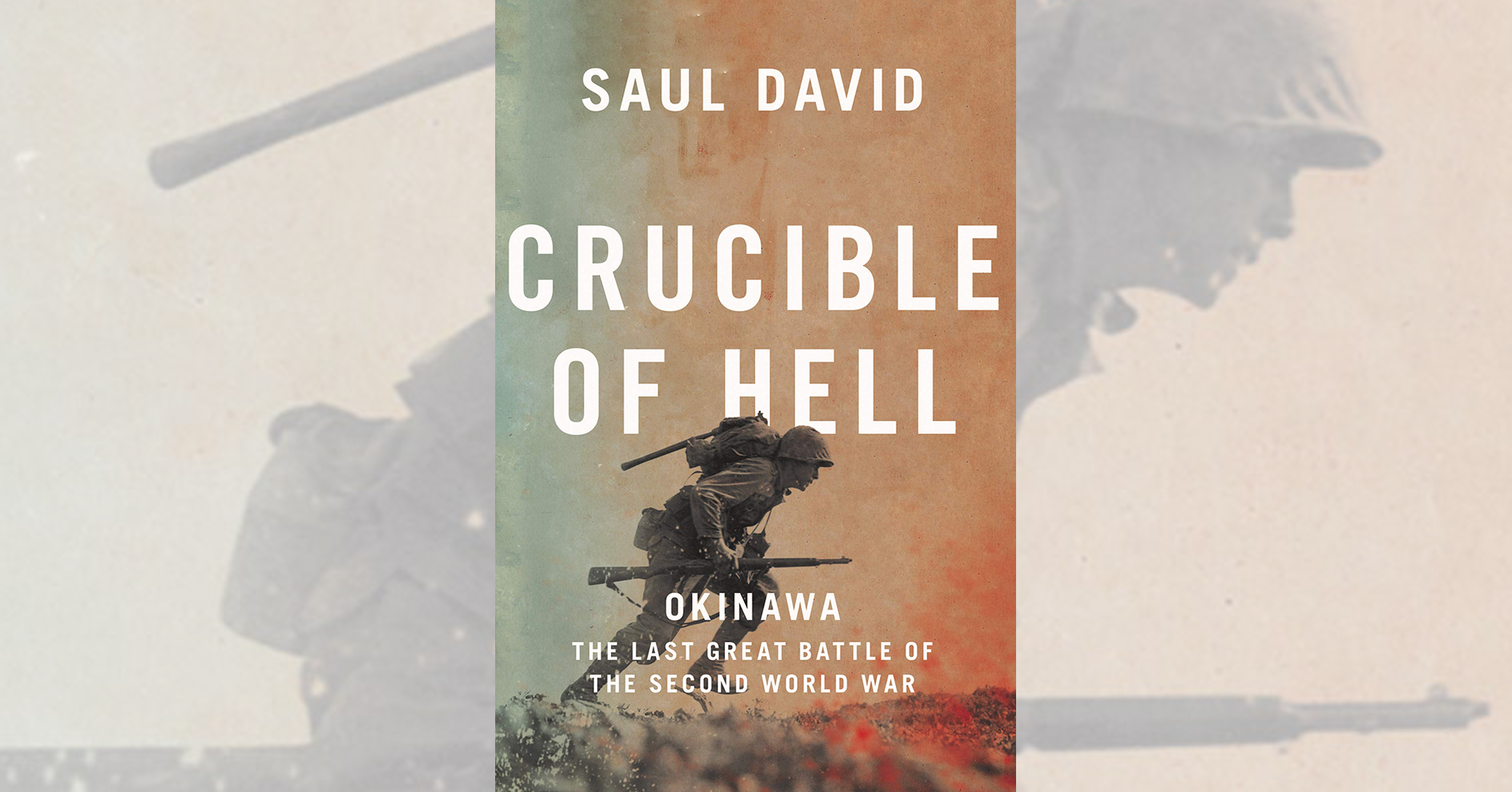Crucible of Hell: The Heroism and Tragedy of Okinawa, 1945, by Saul David, Hachette Books, New York, 2020, $30
Iceberg, the operation to capture Okinawa, some 340 miles off the Japanese mainland, was among the largest, most grueling amphibious assaults in history, stretching 82 blood-soaked days, during which 12,520 Americans were killed and 36,627 were wounded. Author Saul David pays due attention to Lt. Gen. Simon Bolivar Buckner Jr., the operational commander. He also shines a light on the frontline soldier. Among those in the initial landings on April 1, 1945, was William Manchester, a Marine who turned 23 that day and thought his chances of seeing another birthday were slight. He reached the beach and survived to write the Pacific War memoir Goodbye Darkness.
By April 4 some 100,000 Americans were safely ashore, thanks to a masterly deception plan that had convinced the Japanese the main invasion force would land elsewhere. Two days later, in the first serious reaction, 345 kamikazes and a similar number of escorts struck the invasion fleet, sinking or badly damaging 26 ships. The next day waves of U.S. planes attacked the battleship Yamato en route to Okinawa. At a cost of 10 planes and a dozen men the Americans sank their target; only 269 of Yamato’s crew of 2,767 survived. Still, the Japanese ashore held firm in deeply dug defensive positions from which only the infantry could dig them out. Those who survived the crucible recall positions with names like Hacksaw Ridge, Awacha Pocket, Half Moon Hill and Sugar Loaf as “all hell rolled into one.”
David uses personal accounts from both American and Japanese sources to relate the battle, waged against a fanatical enemy who in the last resort often committed suicide. By the end the Japanese had lost as many as 110,000 soldiers and perhaps a third of the island’s population—an estimated 120,000 civilians—many of whom killed themselves after first having slain their children and elderly relatives.
In a tragic footnote, on June 18 Buckner made another visit to the front lines and was mortally wounded by an enemy shell, making him the highest-ranking U.S. officer killed in action in World War II. That very day effective Japanese resistance on Okinawa ended.
A month later in New Mexico came the first detonation of an atomic bomb, followed by those dropped on Hiroshima and Nagasaki. The Japanese surrender came within days, almost certainly averting a repeat of Okinawa many times greater on the Japanese mainland. Read this superb book to learn why.
—David Saunders
This post contains affiliate links. If you buy something through our site, we might earn a commission.





